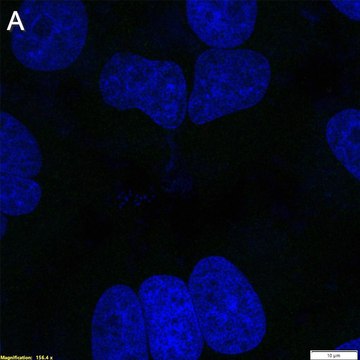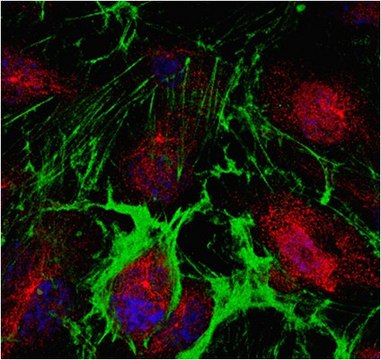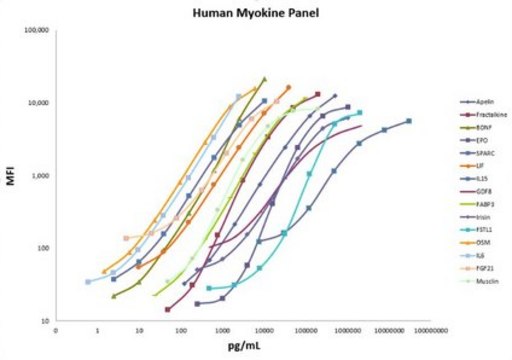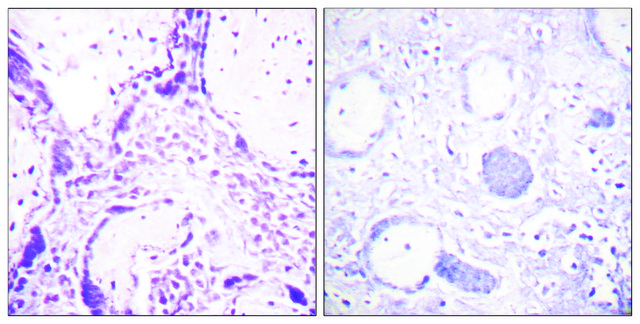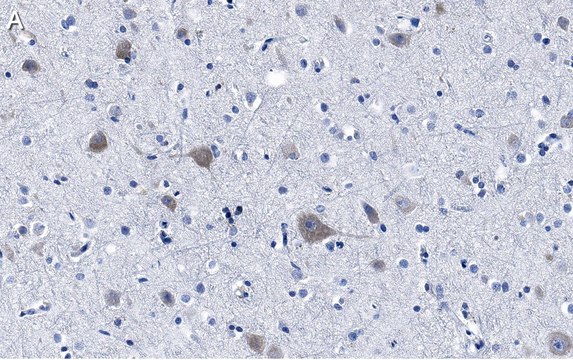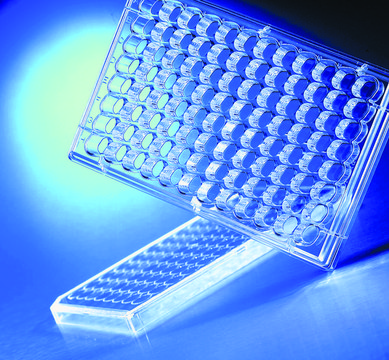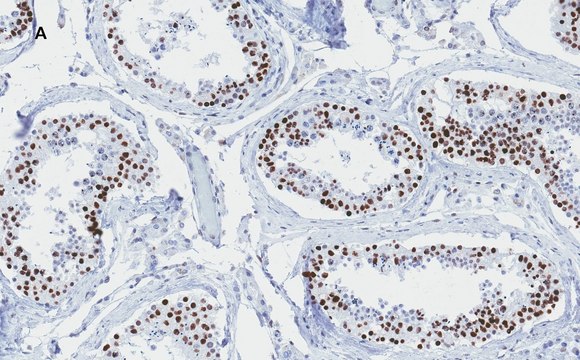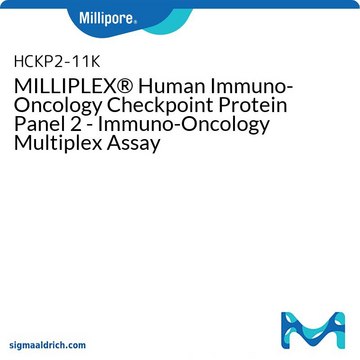一般描述
We are committed to bringing you greener alternative products, which adhere to one or more of The 12 Principles of Green Chemistry.This antibody is Preservative-free, produced without the harm or sacrifice of animals and exceptionally stable to allow for ambient shipping and storage if needed and thus aligns with "Waste Prevention", "Designing Safer Chemicals" and "Design for Energy Efficiency".
Click here for more information.
ZooMAb® antibodies represent an entirely new generation of recombinant monoclonal antibodies.Each ZooMAb® antibody is manufactured using our proprietary recombinant expression system, purified to homogeneity, and precisely dispensed to produce robust and highly reproducible lot-to-lot consistency. Only top-performing clones are released for use by researchers. Each antibody is validated for high specificity and affinity across multiple applications, including its most commonly used application. ZooMAb® antibodies are reliably available and ready to ship when you need them.
特异性
Clone 114-H1 is a ZooMAb® Rabbit recombinant monoclonal antibody that specifically detects Double-stranded RNA-specific adenosine deaminase (ADAR1). It targets an epitope within the internal region.
免疫原
His-tagged recombinant fragment corresponding to 243 amino acids from the internal region of human Double-stranded RNA-specific adenosine deaminase (ADAR1).
应用
Quality Control Testing
Evaluated by Western Blotting in HeLa cell lysate.
Western Blotting Analysis: A 1:1,000 dilution of this antibody detected ADAR1 in HeLa cell lysate.
Tested applications
Western Blotting Analysis: A 1:1,000 dilution from a representative lot detected ADAR1 in NTERA-2 and L6 cell lysates.
Immunohistochemistry (Paraffin) Analysis: A 1:100 dilution from a representative lot detected ADAR1 in human cerebral cortex tissue sections.
Affinity Binding Assay: A representative lot of this antibody bound ADAR1 with a KD of 3.4 x 10-8 in an affinity binding assay.
Immunocytochemistry Analysis: A 1:100 dilution from a representative lo detected ADAR1 in HeLa cells.
Note: Actual optimal working dilutions must be determined by end user as specimens, and experimental conditions may vary with the end user
目标描述
Double-stranded RNA-specific adenosine deaminase (UniProt: P55265; also known as EC:3.5.4.37, DRADA, 136 kDa double-stranded RNA-binding protein, p136, Interferon-inducible protein 4, IFI-4, K88DSRBP, ADAR1) is encoded by the ADAR (also known as ADAR1, DSRAD, G1P1, IFI4) gene (Gene ID: 103) in human. In mammals three different ADAR proteins have been described: ADAR1, -2, and -3. ADAR1 is a ubiquitously expressed homodimeric enzyme that catalyzes the hydrolytic deamination of adenosine to inosine (A to I) in double-stranded RNA (dsRNA). A-to-I editing is shown to predominantly occur in noncoding, repetitive elements and short interspersed nuclear elements (SINEs). This A-to-I editing affects gene expression and function in several ways, including mRNA translation by changing codons and hence the amino acid sequence of proteins, RNA stability by changing sequences during viral RNA replication, and RNA structure-dependent activities such as microRNA production or targeting or protein-RNA interactions. Homodimerization of ADAR1 is shown to be essential for its catalytic activity. Five isoforms of ADAR1 have been described that are produced by alternative promoter usage and alternative splicing. Isoform 5, which can form heterodimers with ADAR2, is expressed at higher levels in astrocytomas and its expression increases with severity of the tumor. Loss of ADAR1 is shown to overcome resistance to PD-1 checkpoint blockade caused by inactivation of antigen presentation by tumor cells and sensitizes tumors to interferons. This ZooMAbZooMAb® recombinant monoclonal antibody, generated by our propriety technology, offers significantly enhanced specificity, affinity, reproducibility, and stability over conventional monoclonals. (Ref.: Ishizuka, JJ., et al. (2019). Nature. 565(7737); 43-48; Cho, DSC., et al. (2003). J. Biol. Chem. 278(19); 17093-17102; George, CX., and Samuel, CE (1999). Proc. Natl. Acad. Sci. USA. 96(8); 4621-4626).
外形
Purified recombinant rabbit monoclonal antibody IgG, lyophilized in PBS, 5% Trehalose, normal appearance a coarse or translucent resin. The PBS/trehalose components in the ZooMAb formulation can have the appearance of a semi-solid (bead like gel) after lyophilization. This is a normal phenomenon. Please follow the recommended reconstitution procedure in the data sheet to dissolve the semi-solid, bead-like, gel-appearing material. The resulting antibody solution is completely stable and functional as proven by full functional testing. Contains no biocide or preservatives, such as azide, or any animal by-products. Larger pack sizes provided as multiples of 25 μL.
重悬
300 μg/mL after reconstitution at 25 μL per vial. Please refer to guidance on suggested starting dilutions and/or titers per application and sample type.
储存及稳定性
Recommend storage of lyophilized product at 2-8°C; Before reconstitution, micro-centrifuge vials briefly to spin down material to bottom of the vial; Reconstitute each vial by adding 25 μL of filtered lab grade water or PBS; Reconstituted antibodies can be stored at 2-8°C, or -20°C for long term storage. Avoid repeated freeze-thaws.
法律信息
ZooMAb is a registered trademark of Merck KGaA, Darmstadt, Germany
免责声明
Unless otherwise stated in our catalog or other company documentation accompanying the product(s), our products are intended for research use only and are not to be used for any other purpose, which includes but is not limited to, unauthorized commercial uses, in vitro diagnostic uses, ex vivo or in vivo therapeutic uses or any type of consumption or application to humans or animals.

